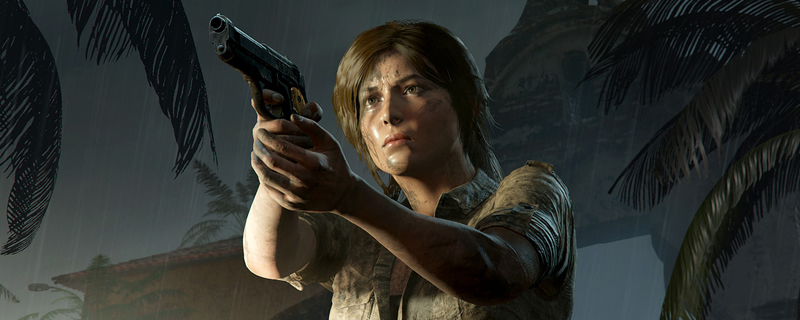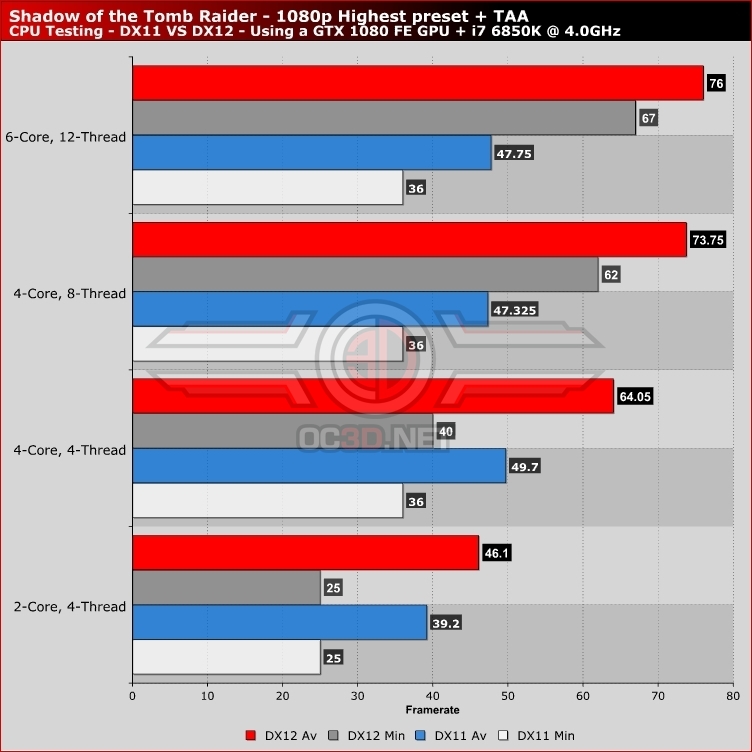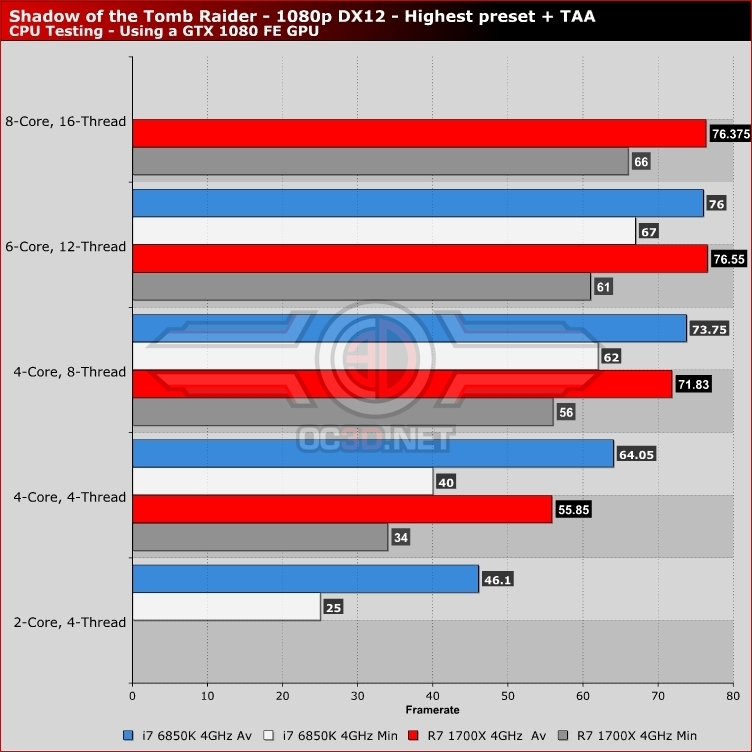Shadow of the Tomb Raider PC Performance Review
Core Scaling – DX11 VS DX12 – How many cores should Tomb Raider players have?
DX11 VS DX12
Shadow of the Tomb Raider is a game that showcased the problems associated with in-game benchmarking tools, as they often work on testing a system’s graphics card, not the game’s CPU configuration.Â
This annoyance left us in a position where we found CPU-related slowdowns in-game that never appeared within the game’s benchmark, but thankfully they only seem to manifest within hub areas like Kuwaq Yaku or the “Hidden City”. Â
To kickstart our CPU performance testing, we decided to compare the performance of Shadow of the Tomb Raider under DirectX 11 and DirectX 12 using our i7 6850K at several different core counts. Here we found a larger performance difference than what appears within the game’s integrated benchmarking tool.Â
While running though Kuwaq Yaku, we find that the game’s DirectX 11 version is heavily single-thread limited, while the game’s DirectX 12 version loves to use additional cores/threads, with 4 cores/8 threads or more proving to be optimal in the game’s demanding hub areas. It is worth noting that these performance dips present themselves as instantaneous stutters, likely due to the lading of new game assets.Â
CPU utilisation decreases significantly when moving into other, less populated, areas within Tomb Raider, making dual-core and quad-core processor much more usable. Even so, we recommend that PC players of Shadow of the Tomb Raider use processors with at least four strong CPU cores. Â
Similar drops can be seen in other hub areas like the “hidden city”. DX12 offers PC gamers increased CPU parallelisation, enabling improved performance on both Radeon and Geforce graphics hardware.Â
We repeated the same testing using DirectX 12 on our 4GHz Ryzen 7 1700X, where we found that Shadow of the Tomb Raider was able to utilise all sixteen threads within the processor, showcasing how parallelised Shadow of the Tomb Raider can be.Â
When comparing equal core/thread counts between our Ryzen and Intel Broadwell-E systems, we can see that Intel offers a clear performance advantage, though these performance differences minimise once we start using processors with six cores or over.Â
Like we have seen in many other modern titles, it is becoming clear that the era of dual cores is coming to an end in the PC gaming market. Yes, in Shadow of the Tomb Raider we can see 30+ FPS gameplay outside of most hub areas, but higher core count CPUs offer us a better gameplay experience throughout the game. There is a reason why Square Enix recommends AMD’s Ryzen 5 1600 6-core processor.Â
Â





